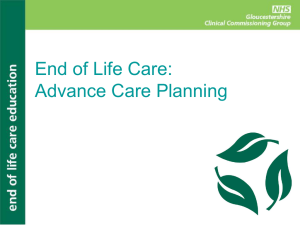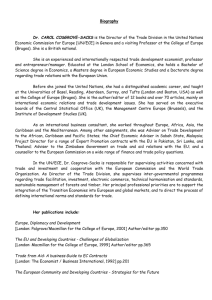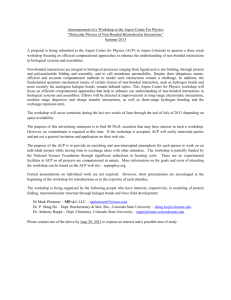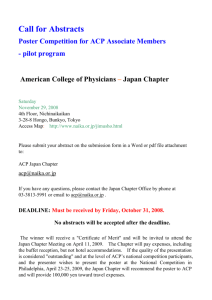Air Cooling Power (ACP) and Thermal Work Limit
advertisement
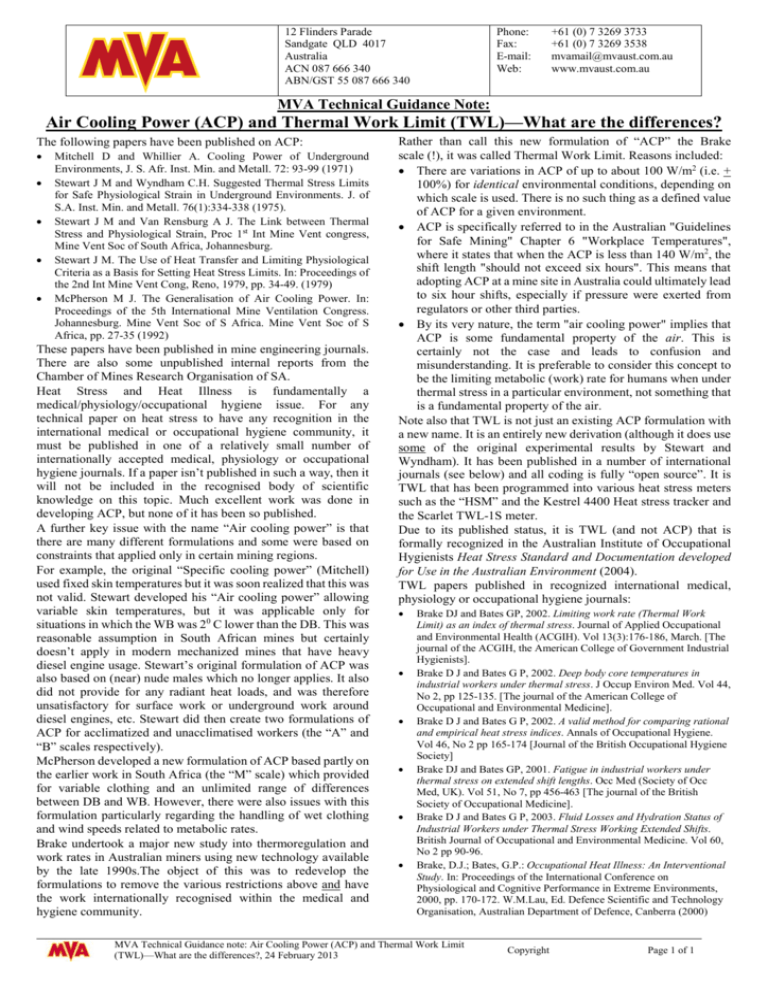
12 Flinders Parade Sandgate QLD 4017 Australia ACN 087 666 340 ABN/GST 55 087 666 340 Phone: Fax: E-mail: Web: +61 (0) 7 3269 3733 +61 (0) 7 3269 3538 mvamail@mvaust.com.au www.mvaust.com.au MVA Technical Guidance Note: Air Cooling Power (ACP) and Thermal Work Limit (TWL)—What are the differences? The following papers have been published on ACP: • • • • • Mitchell D and Whillier A. Cooling Power of Underground Environments, J. S. Afr. Inst. Min. and Metall. 72: 93-99 (1971) Stewart J M and Wyndham C.H. Suggested Thermal Stress Limits for Safe Physiological Strain in Underground Environments. J. of S.A. Inst. Min. and Metall. 76(1):334-338 (1975). Stewart J M and Van Rensburg A J. The Link between Thermal Stress and Physiological Strain, Proc 1st Int Mine Vent congress, Mine Vent Soc of South Africa, Johannesburg. Stewart J M. The Use of Heat Transfer and Limiting Physiological Criteria as a Basis for Setting Heat Stress Limits. In: Proceedings of the 2nd Int Mine Vent Cong, Reno, 1979, pp. 34-49. (1979) McPherson M J. The Generalisation of Air Cooling Power. In: Proceedings of the 5th International Mine Ventilation Congress. Johannesburg. Mine Vent Soc of S Africa. Mine Vent Soc of S Africa, pp. 27-35 (1992) These papers have been published in mine engineering journals. There are also some unpublished internal reports from the Chamber of Mines Research Organisation of SA. Heat Stress and Heat Illness is fundamentally a medical/physiology/occupational hygiene issue. For any technical paper on heat stress to have any recognition in the international medical or occupational hygiene community, it must be published in one of a relatively small number of internationally accepted medical, physiology or occupational hygiene journals. If a paper isn’t published in such a way, then it will not be included in the recognised body of scientific knowledge on this topic. Much excellent work was done in developing ACP, but none of it has been so published. A further key issue with the name “Air cooling power” is that there are many different formulations and some were based on constraints that applied only in certain mining regions. For example, the original “Specific cooling power” (Mitchell) used fixed skin temperatures but it was soon realized that this was not valid. Stewart developed his “Air cooling power” allowing variable skin temperatures, but it was applicable only for situations in which the WB was 20 C lower than the DB. This was reasonable assumption in South African mines but certainly doesn’t apply in modern mechanized mines that have heavy diesel engine usage. Stewart’s original formulation of ACP was also based on (near) nude males which no longer applies. It also did not provide for any radiant heat loads, and was therefore unsatisfactory for surface work or underground work around diesel engines, etc. Stewart did then create two formulations of ACP for acclimatized and unacclimatised workers (the “A” and “B” scales respectively). McPherson developed a new formulation of ACP based partly on the earlier work in South Africa (the “M” scale) which provided for variable clothing and an unlimited range of differences between DB and WB. However, there were also issues with this formulation particularly regarding the handling of wet clothing and wind speeds related to metabolic rates. Brake undertook a major new study into thermoregulation and work rates in Australian miners using new technology available by the late 1990s.The object of this was to redevelop the formulations to remove the various restrictions above and have the work internationally recognised within the medical and hygiene community. Rather than call this new formulation of “ACP” the Brake scale (!), it was called Thermal Work Limit. Reasons included: • There are variations in ACP of up to about 100 W/m2 (i.e. + 100%) for identical environmental conditions, depending on which scale is used. There is no such thing as a defined value of ACP for a given environment. • ACP is specifically referred to in the Australian "Guidelines for Safe Mining" Chapter 6 "Workplace Temperatures", where it states that when the ACP is less than 140 W/m2, the shift length "should not exceed six hours". This means that adopting ACP at a mine site in Australia could ultimately lead to six hour shifts, especially if pressure were exerted from regulators or other third parties. • By its very nature, the term "air cooling power" implies that ACP is some fundamental property of the air. This is certainly not the case and leads to confusion and misunderstanding. It is preferable to consider this concept to be the limiting metabolic (work) rate for humans when under thermal stress in a particular environment, not something that is a fundamental property of the air. Note also that TWL is not just an existing ACP formulation with a new name. It is an entirely new derivation (although it does use some of the original experimental results by Stewart and Wyndham). It has been published in a number of international journals (see below) and all coding is fully “open source”. It is TWL that has been programmed into various heat stress meters such as the “HSM” and the Kestrel 4400 Heat stress tracker and the Scarlet TWL-1S meter. Due to its published status, it is TWL (and not ACP) that is formally recognized in the Australian Institute of Occupational Hygienists Heat Stress Standard and Documentation developed for Use in the Australian Environment (2004). TWL papers published in recognized international medical, physiology or occupational hygiene journals: • • • • • • Brake DJ and Bates GP, 2002. Limiting work rate (Thermal Work Limit) as an index of thermal stress. Journal of Applied Occupational and Environmental Health (ACGIH). Vol 13(3):176-186, March. [The journal of the ACGIH, the American College of Government Industrial Hygienists]. Brake D J and Bates G P, 2002. Deep body core temperatures in industrial workers under thermal stress. J Occup Environ Med. Vol 44, No 2, pp 125-135. [The journal of the American College of Occupational and Environmental Medicine]. Brake D J and Bates G P, 2002. A valid method for comparing rational and empirical heat stress indices. Annals of Occupational Hygiene. Vol 46, No 2 pp 165-174 [Journal of the British Occupational Hygiene Society] Brake DJ and Bates GP, 2001. Fatigue in industrial workers under thermal stress on extended shift lengths. Occ Med (Society of Occ Med, UK). Vol 51, No 7, pp 456-463 [The journal of the British Society of Occupational Medicine]. Brake D J and Bates G P, 2003. Fluid Losses and Hydration Status of Industrial Workers under Thermal Stress Working Extended Shifts. British Journal of Occupational and Environmental Medicine. Vol 60, No 2 pp 90-96. Brake, D.J.; Bates, G.P.: Occupational Heat Illness: An Interventional Study. In: Proceedings of the International Conference on Physiological and Cognitive Performance in Extreme Environments, 2000, pp. 170-172. W.M.Lau, Ed. Defence Scientific and Technology Organisation, Australian Department of Defence, Canberra (2000) MVA Technical Guidance note: Air Cooling Power (ACP) and Thermal Work Limit (TWL)—What are the differences?, 24 February 2013 Copyright Page 1 of 1



